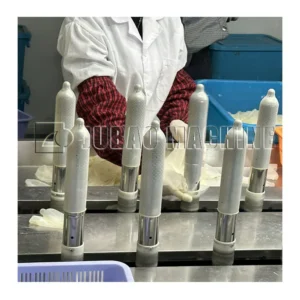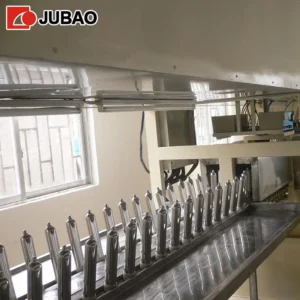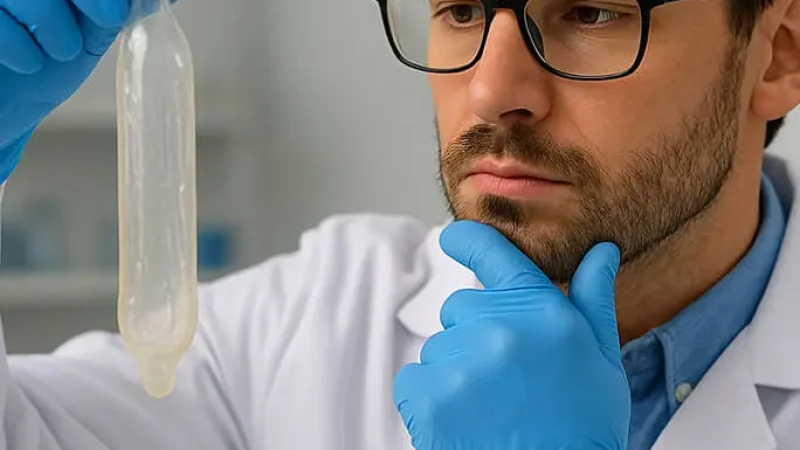Condom Pinhole Tester: Essential Quality Control Equipment for Manufacturing
Table of Contents
- Introduction to Condom Pinhole Testing
- What is a Condom Pinhole Tester?
- Types of Pinhole Testing Methods
- Technical Specifications and Features
- Industry Standards and Regulations
- Operating Procedures and Best Practices
- Selecting the Right Pinhole Tester
- Troubleshooting Common Issues
- Future Developments in Testing Technology
- Conclusion
Introduction to Condom Pinhole Testing
Quality assurance in contraceptive manufacturing is paramount to public health and safety. Among the most critical aspects of condom production is ensuring the complete integrity of the latex or synthetic material barrier. Even microscopic holes or defects can compromise the effectiveness of condoms, potentially leading to unintended pregnancies or transmission of sexually transmitted infections.
Condom pinhole testing represents a crucial quality control checkpoint in the manufacturing process, serving as the final line of defense against defective products reaching consumers. This comprehensive testing process employs sophisticated equipment designed to detect even the smallest imperfections that might not be visible to the naked eye.
What is a Condom Pinhole Tester?
Definition and Purpose
A condom pinhole tester is a specialized quality control instrument designed to detect microscopic holes, tears, or other integrity defects in condom materials. These automated or semi-automated systems use various detection methods to identify products that fail to meet stringent safety standards before they reach the consumer market.
The primary purpose of these testing devices is to ensure that every condom maintains its barrier function effectively. By identifying and removing defective products from production lines, manufacturers can maintain high-quality standards and protect their brand reputation while safeguarding public health.

Importance in Quality Control
Key Benefits of Pinhole Testing:
- Ensures product reliability and effectiveness
- Maintains compliance with international safety standards
- Protects brand reputation and consumer trust
- Reduces liability risks for manufacturers
- Supports public health initiatives
The implementation of comprehensive pinhole testing protocols significantly reduces the risk of defective products entering the market. Studies indicate that proper testing can identify defects in approximately 0.1% to 0.4% of manufactured condoms, depending on production methods and materials used.
Types of Pinhole Testing Methods
Electrical Conductivity Testing
Electrical conductivity testing is one of the most widely adopted methods for pinhole detection in condom manufacturing. This method relies on the principle that latex and most synthetic condom materials are excellent electrical insulators when intact.
The testing process involves filling the condom with an electrically conductive solution, typically saline water, and then subjecting it to a controlled electrical field. If pinholes or other defects are present, the conductive solution creates a pathway for electrical current, triggering an alarm system that identifies the defective unit.
Advantages of electrical testing include:
- High sensitivity to microscopic defects
- Fast testing cycles suitable for high-volume production
- Reliable and consistent results
- Minimal false positives when properly calibrated
Air Burst Testing
Air burst testing, also known as pneumatic testing, involves inflating condoms with compressed air to predetermined pressure levels. This method tests both the presence of pinholes and the overall structural integrity of the material.
During testing, condoms are gradually inflated while monitoring for pressure drops that indicate leaks. The testing equipment measures both the rate of pressure loss and the maximum pressure the condom can withstand before failure.
Key characteristics of air burst testing:
- Provides comprehensive structural integrity assessment
- Tests both pinhole defects and material strength
- Suitable for testing various condom sizes and materials
- Requires longer testing cycles compared to electrical methods
Water Leak Testing
Water leak testing is a traditional method that remains relevant for certain applications and quality verification processes. This method involves filling condoms with water and observing for leaks over a specified time period.
While less automated than other methods, water leak testing provides a visual confirmation of defects and is often used as a secondary verification method or for spot-checking production quality.
Technical Specifications and Features
Detection Sensitivity
Modern pinhole testing equipment can detect holes as small as 10-50 micrometers in diameter, significantly smaller than what human inspection could identify. The detection sensitivity varies based on the testing method and equipment sophistication.
Typical Detection Capabilities:
- Electrical testing: 10-25 micrometers
- Air burst testing: 15-40 micrometers
- Water leak testing: 50-100 micrometers
Testing Parameters
Professional pinhole testers operate within specific parameters to ensure consistent and reliable results. These parameters include testing pressure, voltage levels for electrical testing, duration of testing cycles, and environmental conditions.
Critical testing parameters include:
- Test pressure: 0.5-2.0 kPa for air testing
- Voltage: 200-500V for electrical testing
- Testing duration: 5-15 seconds per unit
- Temperature range: 18-25°C for optimal accuracy
- Humidity control: 45-65% relative humidity
Automation Features
Contemporary pinhole testing systems incorporate advanced automation features to improve efficiency and reduce human error. These features include automatic feeding systems, computerized data logging, statistical process control integration, and automated reject mechanisms.
Advanced systems can process hundreds of condoms per hour while maintaining detailed records of testing results, production statistics, and quality trends for continuous improvement initiatives.
Industry Standards and Regulations
ISO Standards
The International Organization for Standardization (ISO) provides comprehensive guidelines for condom testing procedures. ISO 4074 specifically addresses natural rubber latex condoms, while ISO 23409 covers synthetic polymer condoms.
These standards specify testing procedures, acceptance criteria, and statistical sampling methods that manufacturers must follow to ensure product quality and regulatory compliance.
FDA Requirements
In the United States, the Food and Drug Administration (FDA) regulates condoms as Class II medical devices. FDA requirements include specific testing protocols, manufacturing quality standards, and documentation requirements for pinhole testing procedures.
Important Note: Manufacturers must maintain detailed documentation of all testing procedures and results for FDA compliance and potential audit requirements.
International Compliance
Different regions maintain varying regulatory requirements for condom testing. European CE marking, Japanese JIS standards, and WHO prequalification programs each have specific requirements that manufacturers must address when developing global distribution strategies.
Operating Procedures and Best Practices
Preparation and Setup
Proper preparation and setup of pinhole testing equipment is essential for accurate and reliable results. This process includes environmental conditioning, equipment calibration, and sample preparation procedures.
Setup procedures typically include:
- Environmental conditioning of test samples (30 minutes at controlled temperature)
- Equipment warm-up and calibration verification
- Preparation of testing solutions (if applicable)
- Documentation of testing conditions and parameters

Testing Protocol
Standardized testing protocols ensure consistent results and regulatory compliance. These protocols specify sampling procedures, testing sequences, acceptance criteria, and documentation requirements.
Most testing protocols follow a statistical sampling approach, testing a representative portion of production rather than every single unit, balancing quality assurance with production efficiency.
Maintenance and Calibration
Regular maintenance and calibration of pinhole testing equipment is crucial for maintaining accuracy and reliability. Preventive maintenance schedules typically include daily operational checks, weekly calibration verification, and periodic comprehensive servicing.
Calibration procedures often involve testing with known defective samples to verify detection sensitivity and using certified reference standards to ensure measurement accuracy.
Selecting the Right Pinhole Tester
Factors to Consider
Selecting appropriate pinhole testing equipment requires careful consideration of production volumes, testing requirements, budget constraints, and future scalability needs.
Key selection criteria include:
- Production capacity requirements
- Detection sensitivity needs
- Automation level preferences
- Integration capabilities with existing systems
- Regulatory compliance requirements
- Maintenance and support availability
Cost Analysis
Total cost of ownership for pinhole testing equipment includes initial purchase price, installation costs, ongoing maintenance expenses, operator training, and potential downtime costs. A comprehensive cost analysis should consider both immediate and long-term financial implications.
Return on investment calculations should factor in the cost savings from preventing defective products from reaching the market, potential liability reduction, and improved production efficiency.
Vendor Evaluation
Vendor selection involves evaluating technical capabilities, service support, training programs, and long-term partnership potential. Established vendors typically offer comprehensive support packages including installation, training, maintenance, and technical assistance.
Troubleshooting Common Issues
Common issues with pinhole testing equipment include false positives, detection sensitivity drift, equipment calibration problems, and environmental interference. Understanding these issues and their solutions helps maintain consistent testing quality.
Common troubleshooting scenarios:
- High false positive rates often indicate calibration issues or contaminated testing solutions
- Detection sensitivity problems may result from worn electrodes or pressure sensor calibration drift
- Environmental factors such as temperature and humidity fluctuations can affect testing accuracy
- Equipment wear and inadequate maintenance can lead to inconsistent results
Future Developments in Testing Technology
The future of condom pinhole testing technology focuses on increased automation, improved detection sensitivity, and integration with Industry 4.0 manufacturing concepts. Emerging technologies include machine learning algorithms for pattern recognition, advanced sensor technologies, and real-time statistical process control integration.
Developments in artificial intelligence and machine learning promise to enhance defect detection algorithms and provide predictive maintenance capabilities for testing equipment.
Conclusion
Condom pinhole testing represents a critical component of quality assurance in contraceptive manufacturing. The selection and implementation of appropriate testing equipment directly impacts product quality, regulatory compliance, and ultimately public health outcomes.
As technology continues to advance, manufacturers must stay current with testing methodologies, regulatory requirements, and best practices to maintain competitive advantage while ensuring the highest standards of product safety and effectiveness.
Investment in quality pinhole testing equipment and procedures not only protects consumers but also safeguards manufacturer reputation and supports global public health initiatives. The continued evolution of testing technology promises even greater accuracy and efficiency in ensuring condom quality and reliability.
